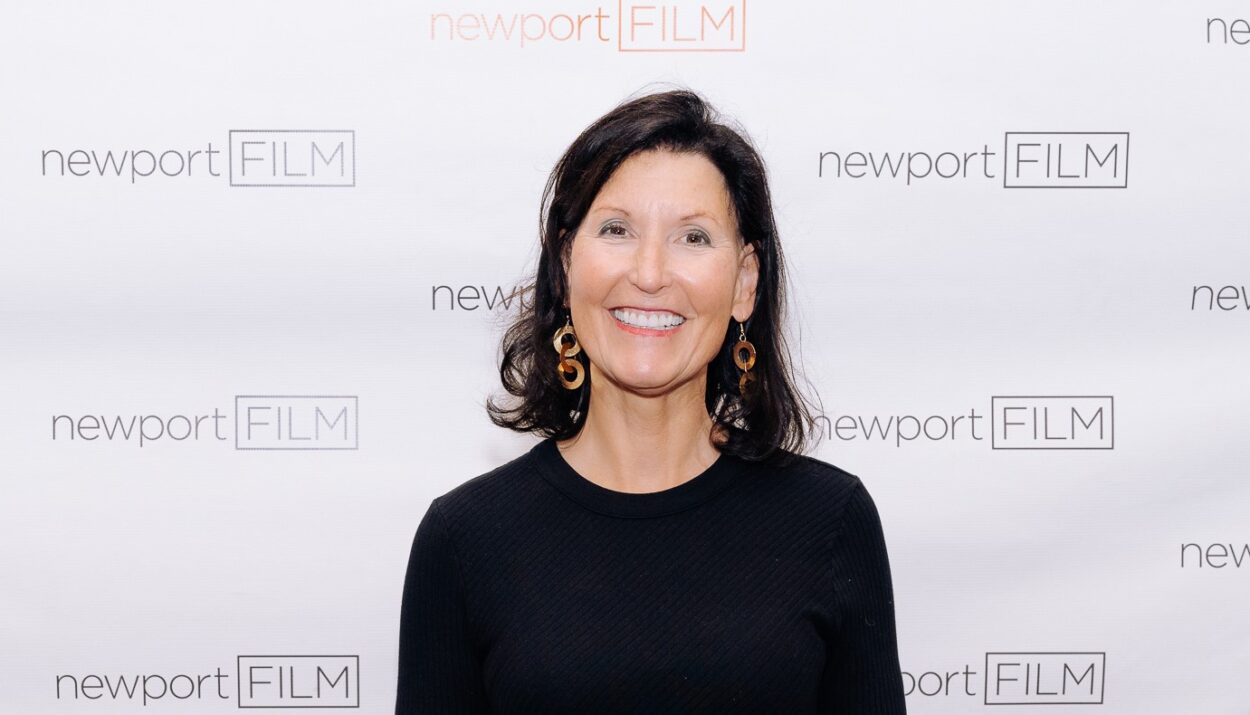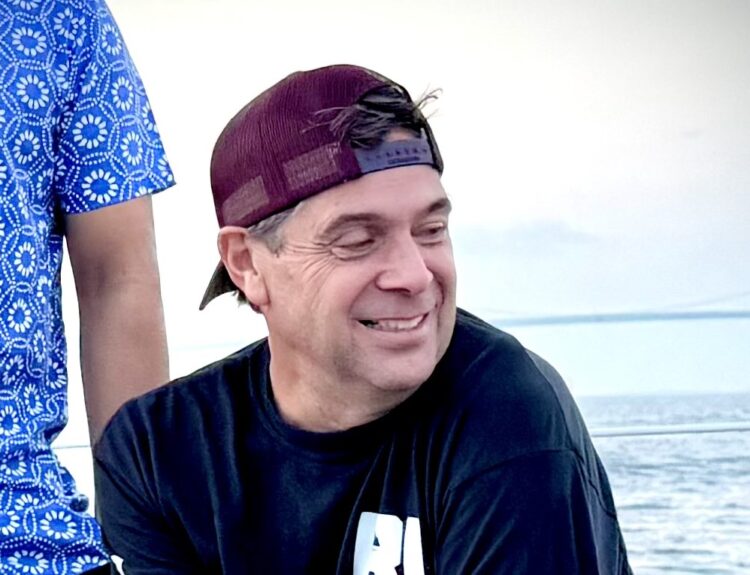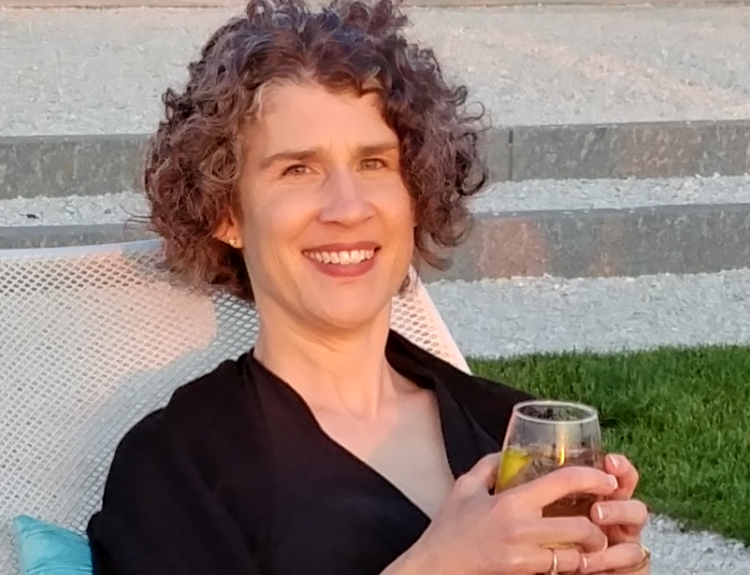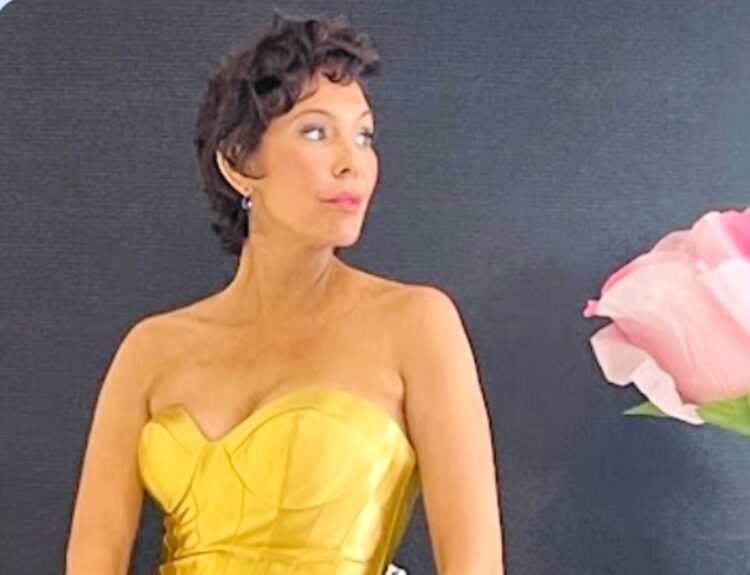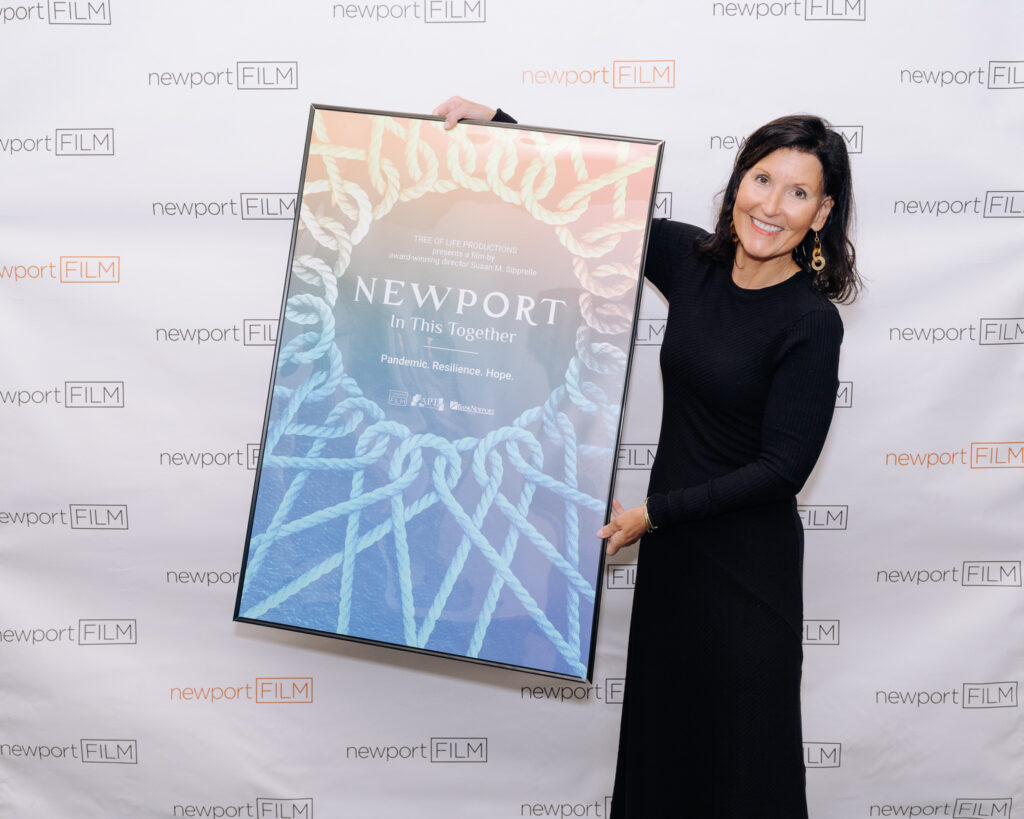
Susan, your latest film, “Newport: In This Together,” has been getting a lot of media attention lately, including in The Boston Globe, The Bartholomewtown podcast, WUN, Newport This Week and The Rhode Show – and with good reason. It’s quite an achievement. Can you give us an overview?
When faced with a global health pandemic, residents of Newport, Rhode Island managed to pull together rather than apart. Overcoming the pandemic inspired innovation and flexibility in government, nonprofits, businesses, healthcare, and individuals. Although serious issues persist for the beautiful City-by-the-Sea, the pandemic helped Newporters rediscover their resilience, community and hope.
When did you begin filming?
During the pandemic, I was locked down with 10 members of my family on Aquidneck Island. In November 2020, I went out for a run to get some exercise and fresh air.. When I passed under Hanging Rock in Middletown, a famous spot for thinking and philosophizing, it suddenly struck me that I could document what was happening during a global health pandemic in Newport, a small American city with both national and international name recognition. I started my film with this question: How does a community cope with an external threat?
Also, full disclosure – I was born in Newport and love the city.
How many people did you interview?
Not long after I began to work on “NEWPORT: In This Together,” I talked with Robb Moss, Harvard professor of art, film and visual studies, about my ideas for this film. In a traditional documentary structure, there is one main character or, alternatively, three main characters. There are three main characters in my first two films. I wanted to challenge myself with my third film, and I thought of Newport as the central character with many supporting players, all my interviewees.
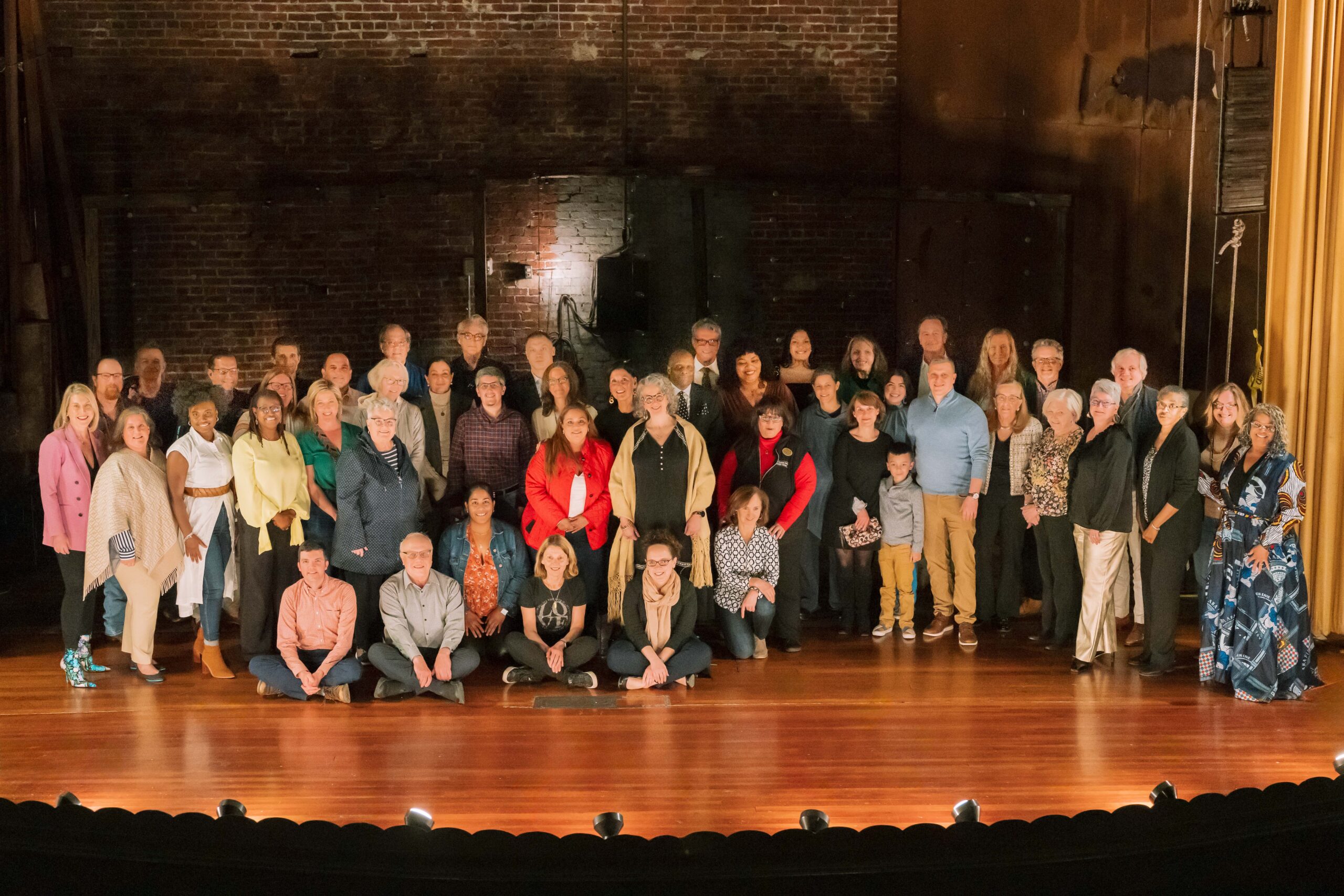
“There is a long tradition of films about places,” Robb said when I described my vision. I found his simple words both comforting and inspirational.
After settling on the idea, I felt very pressured to capture as many experiences as possible. Between November 2020 and May 2021, my local crew and I filmed about 200 interviews with healthcare workers, elected officials, government workers, teachers, students, business owners, nonprofit leaders, construction workers, kitchen staff, and agricultural workers in Newport.
Filming at the height of the pandemic was not easy, and I felt very responsible for the health of my crew, my interviewees and my family. I had to file a COVID safety plan with the State of Rhode Island. My crew and I always wore masks, as did our interviewees, unless they were on Zoom. We conducted many interviews outdoors, even during the cold winter months, as an additional precaution. We used a boom for these interviews rather than lapel mics, so that we could maintain social distancing.
Susan Ades, editor, and I worked very hard to include as many voices in the film as possible. There are 108 Newporters with speaking roles in the documentary, and I remain sad that we could not squeeze in all 200 interviewees.
And while the focus is the City by the Sea, the documentary really speaks to the experiences of many people in Rhode Island and the U.S. during the COVID pandemic, correct?
Ideally, a work of art about one person or one place engages viewers to see themselves or some aspect of their lives in it. Of course, I hope that my film, which focuses on Newport during the Covid-19 pandemic, prompts audiences nationwide to recognize their own ability to adapt and innovate when faced with a great challenge, to see their own resilience and to reach out to others who need help and support. Fundamentally, I want viewers, who see how Newporters found strength in themselves and in their community during a difficult time, to feel inspired and hopeful. As Arthur Jenkins, handyman, says at the end of the film, “We are all one.”
How can folks view it?
They will have to check their local listings. American Public Television will release it to stations across the country on May 1, and then the individual stations decide when to air it.
Rhode Island PBS will air “NEWPORT: In This Together” on these dates and times:
Sunday, May 5 at 10 pm
Tuesday, May 7 at 1 pm
Friday, May 10 at 3 am
The public television version of “NEWPORT: In This Together” is 60 minutes long. The feature-length version that premiered in Newport on April 11 and 12 is 80 minutes long. Screenings can be requested. Please email hello@newportinthistogether.com
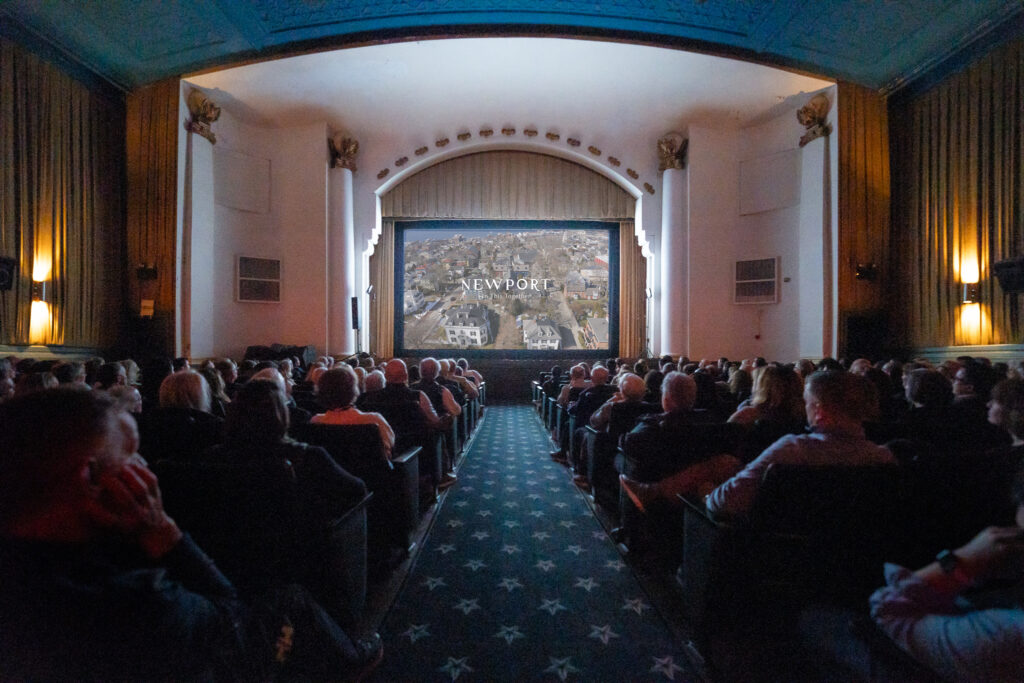
Tell us about the other members of the “Newport: In This Together” team: editor Susan B. Ades and digital director Cara Sipprelle.
In 2022, I was desperately seeking an editor and very lucky to find Susan Ades, editor, through New York Women in Film and Television. Editing “NEWPORT: In This Together” required creativity, intensity and attention to detail. She has all those skills in abundance. Not only did we have to work through the 200 original interviews, but there was additional b-roll footage, archival footage and news clips that all had to be woven together to create this documentary. I interviewed a few editors before Susan and they were not willing to take on such a big project. Susan and I built a great working relationship and rapport on this film; we are working together on smaller projects for nonprofits currently.
Cara Sipprelle is a freelance digital consultant. Before she had her two young children, she was Associate Director of Digital Strategy for Success Academy Charter Schools in New York City. Presently, she consults for charter schools in Massachusetts, and she has managed all of the media for NEWPORT: In This Together. It’s been simply wonderful to work closely on a professional basis with my daughter on this entire project.
Inspired by the people in the documentary, you founded the reNEWPORT Community Group. What is it?
Inspired by the generosity and efforts of the many Newporters I interviewed during the filming, I founded reNEWPORT, a community group, to facilitate greater connection between nonprofit and business leaders, government officials, and engaged citizens. Community leader Ellen Pinnock is my co-chair. Last fall, reNEWPORT was able to bring together the city, Newport in Bloom, a nonprofit, and private donors to plant bulbs in Newport’s North End, an underserved neighborhood. Right now, 38,000 daffodils are blooming in Miantonomi Park. Next, our group will tackle chronic absenteeism in the lower elementary grades.
Fill us in on the journey you traveled to becoming a documentarian, including your education and any mentors you may have had along the way.
After I graduated from Williams College in 1980, I moved to Hoboken, New Jersey with my soon-to-be husband, Dwight. I started out as a commercial banker in New York City, working for Chemical Bank, which later merged with Chase Manhattan Bank. Then Dwight and I had five children, and I was an at-home mother for many years, although I did earn my MBA part time from New York University when the kids were young. As they got older, I started writing some articles for the local paper, and a friend said, “You seem to like what you’re doing. Why don’t you take a journalism class?” It was an “aha” moment. I thought I would attend our local community college, but I saw online that Columbia Graduate School of Journalism had a part-time program. By that time, we lived in Englewood, New Jersey, and Columbia was just on the other side of the George Washington Bridge. I applied and was accepted. Columbia j-school changed my life.
I started out with the ridiculous idea that I would write magazine stories around my busy schedule with five children. Print was already in decline and the Great Recession was looming. Partway through the j-school program, I changed my concentration from print to new media because I decided I might as well learn as much as possible since I did not have a clear post graduation plan. I went from being a decent student to the worst in my class! My fellow students were barely older than my own teenagers, and they were much more tech savvy than I was. I asked a lot of questions and followed their lead whenever possible. I gradually learned some new skills and began to catch up with my classmates. I wrote my master’s thesis on the readjustment experience of three Iraq veterans who returned to civilian life in New York. I graduated with honors from Columbia in 2008 at the age of 50.
Subsequently, Duy Linh Tu, a former professor, who is now Dean of Students at the j-school, asked me to help him on a multimedia project for the school, which was a terrific learning opportunity. Once it wrapped up, I wanted to embark on my own multimedia project. At the time, Baby Boomers were struggling with unemployment due to the Great Recession. They were losing their health insurance; their homes were underwater, and they were burning through their retirement savings, if they had any. I decided to tell their stories. I talked it over with my husband, and he said, “Go for it, Sue.” He gave me encouragement and support, which is ongoing, and for which I remain very grateful.
Your production company is Tree of Life. When was it founded and what is the meaning of the name?
I founded Tree of Life Productions, LLC in 2010. Thank you for asking where the name comes from! I drew my inspiration from the Shaker Tree of Life, but a tree of life image is important in many faiths. It is meaningful to me that the tree of life can be understood to represent the force that connects all lives.
So let’s get into some of Tree of Life’s productions, starting with “Over 50 and Out of Work.” A summary, please.
My older children helped me find Sam Newman, who had recently graduated from Vassar with a degree in film. We traveled around the country and conducted video interviews with 100 Americans over the age of 50 who had lost their jobs due to the economic downturn. We concentrated our interviews in the states with the highest rates of unemployment, and we also interviewed experts at Harvard, Rutgers, Boston College and Princeton on the issues surrounding unemployment among older Americans.
Out of this huge amount of footage, we created “Over 50 and Out of Work,” a website that features edited versions of the filmed interviews.
As the “Over 50 and Out of Work” website grew, it came to the attention of both the national press and AARP. The Huffington Post wrote a terrific article about the website, which was noted by Senate staffers. We were asked to testify before the Senate Health, Education, Labor and Pension Committee in June 2011. We created a short video that summarized the pain and hardships our interviewees were suffering due to the Great Recession. For the record, Senator Whitehouse, who did not know me at the time and certainly did not know that I was originally from Rhode Island, asked me a question about the fate of a Rhode Islander who appeared in the video. I appreciated his question and concern!
After this remarkable experience, Sam asked, “Why don’t we make a documentary?” And I said, “Why not?” That’s how my documentary film career got started.
And “Set for Life”
We decided to focus the documentary on three of the original 100 interviewees, the three individuals who had the most compelling stories. We did additional filming in West Virginia, South Carolina and California with them, and we wove in clips from the other interviewees and the experts on unemployment. We named the film “Set for Life” because so many of our interviewees said, “I thought I was set for life when I got the job at the bank or at the steel mill or on the railroad or at AT&T.”
I had absolutely no film festival strategy. I started entering “Set for Life” in local film festivals and in festivals located in states where we had conducted interviews, and, to my astonishment, it started getting accepted and winning. I also contacted American Public Television, which eventually became the film’s distributor, and AARP became a sponsor. “Set for Life” was released in 2012 and has been shown over 4,000 times and in over 80 percent of the U.S. public television markets.
And “It Was a Good Time Then: A Rhode Island Life”
During the “Over 50 and Out of Work” interview process, I was not only aiming for geographic diversity, but also employment diversity. I was trying to include as many different types of jobs and professions as I could. In Rhode Island, I wanted to interview a lobsterman or a fisherman, and I found Jerry Carvalho in South County.
Sam and I had been traveling and filming for several days, and Dwight joined us for the Rhode Island portion of the trip. I was eager to get home, especially because, as we drove to Jerry’s house, my youngest daughter called to say that she had a sore throat. I thought to myself – maybe this interview will be a quick one.
Jerry was waiting and greeted us as we pulled into his driveway. He had snowy white hair and a twinkle in his eye. The instant he started talking, I knew we would be there for a while. He is a true storyteller and described his full and adventurous life in rich detail. His work as a fisherman was changing and becoming more challenging due to new regulations and the growing impact of climate change, not as a result of the Great Recession, so he did not fit the “Over 50 and Out of Work” template. But I could not let his story and the footage languish, so Sam and I produced a short video biography about Jerry called “It Was a Good Time Then: A Rhode Island Life.”
And lastly, “Soldier On: Life After Deployment”
Ten percent of the 100 interviewees in “Set for Life” are veterans and one of the three main characters, George Ross, is a Vietnam veteran. His son, Jason Ross, a former Marine, was grievously injured by an IED in March 2011 during his second deployment to Afghanistan. This horrific event took place about a month after I met and interviewed George in California.
This exposure to veterans made me ask, “Who are the women who join the all-volunteer American military today? What happens to them when they serve and what happens when they return home? Exploring these questions led to my second documentary, “Soldier On: Life After Deployment.”
Soldier On follows three women as they confront the challenges of readjusting to civilian life after their post-9/11 military service. The women in Soldier On are forthright about their many problems, while simultaneously managing to find humor in their struggles as they gradually reconnect with their own inner strength and resilience. Forever changed by their military service, the women adapt and forge their own new places in the civilian world.
“Soldier On: Life After Deployment” is distributed by American Public Television. It premiered on Channel 13 in New York in March 2017 during Women’s History Month. It has been shown over 14,000 times and in over 90 percent of the U.S. public television markets.
What advice do you have for young video producers and filmmakers?
Go for it!
Find the story(ies) you want to tell that will engage viewers. But think it through – As they say, how do you make a million dollars on a film? Start with two million. And distribution is really difficult in the streaming/AI era.
What’s next for Susan Sipprelle?
I have to take a breather because NEWPORT: In This Together has been so all-consuming for three-plus years. I am working on a couple of short videos for nonprofits on Aquidneck Island. I also want to devote considerable time and energy now to reNEWPORT. We can help reduce chronic absenteeism in the lower grades by supporting the work that the Newport public schools are already doing around this critical problem. reNEWPORT Is a great group. Join us.
Editor’s note: The trailer for “NEWPORT: In This Together” can be viewed here.

